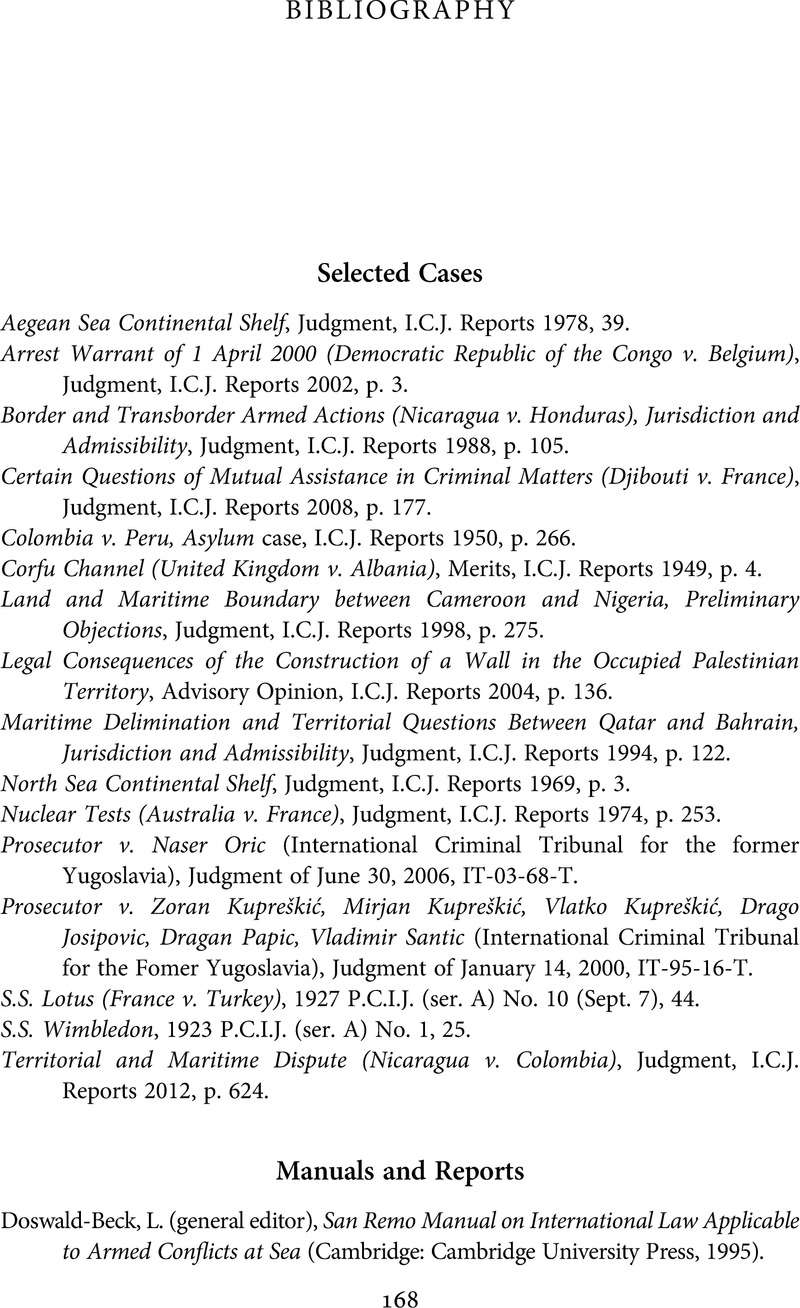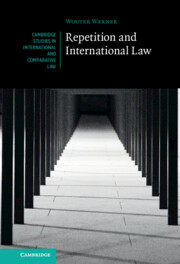Book contents
- Repetition and International Law
- Cambridge Studies in International and Comparative Law: 162
- Repetition and International Law
- Copyright page
- Contents
- Acknowledgments
- Introduction
- 1 The Eternal Return of Not Quite the Same: Repetition and the Sources of International Law
- 2 The Law of Receding Origins: Repetition and the Identification of Customary International Law
- 3 “Once Upon a Time, There Was a Story That Began”: Repetition in Security Council Resolutions
- 4 Say That Again, Please: Repetition in the Tallinn Manual
- 5 Rehearsing Rehearsing: Repetition in International Moot Court Competitions
- 6 The Unimaginable on Screen: Repetition in Documentary Films on Trauma and Atrocities
- The End
- Bibliography
- Index
- Cambridge Studies in International and Comparative Law
- References
Bibliography
Published online by Cambridge University Press: 20 January 2022
- Repetition and International Law
- Cambridge Studies in International and Comparative Law: 162
- Repetition and International Law
- Copyright page
- Contents
- Acknowledgments
- Introduction
- 1 The Eternal Return of Not Quite the Same: Repetition and the Sources of International Law
- 2 The Law of Receding Origins: Repetition and the Identification of Customary International Law
- 3 “Once Upon a Time, There Was a Story That Began”: Repetition in Security Council Resolutions
- 4 Say That Again, Please: Repetition in the Tallinn Manual
- 5 Rehearsing Rehearsing: Repetition in International Moot Court Competitions
- 6 The Unimaginable on Screen: Repetition in Documentary Films on Trauma and Atrocities
- The End
- Bibliography
- Index
- Cambridge Studies in International and Comparative Law
- References
Summary

- Type
- Chapter
- Information
- Repetition and International Law , pp. 168 - 181Publisher: Cambridge University PressPrint publication year: 2022



